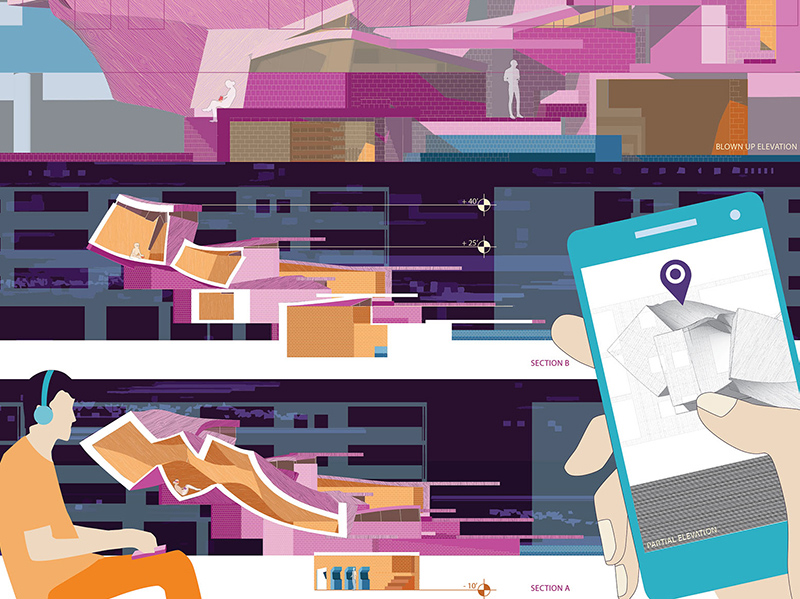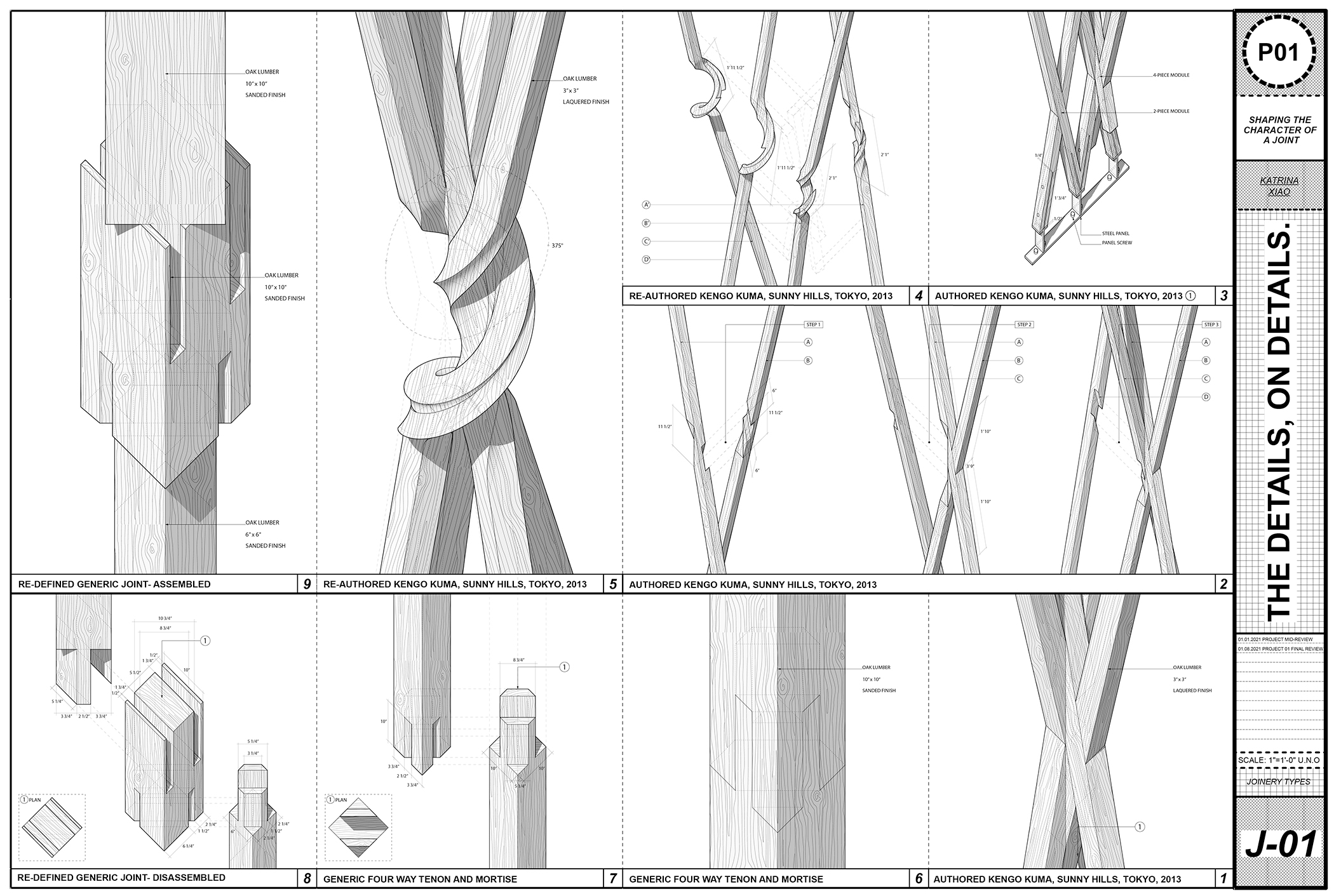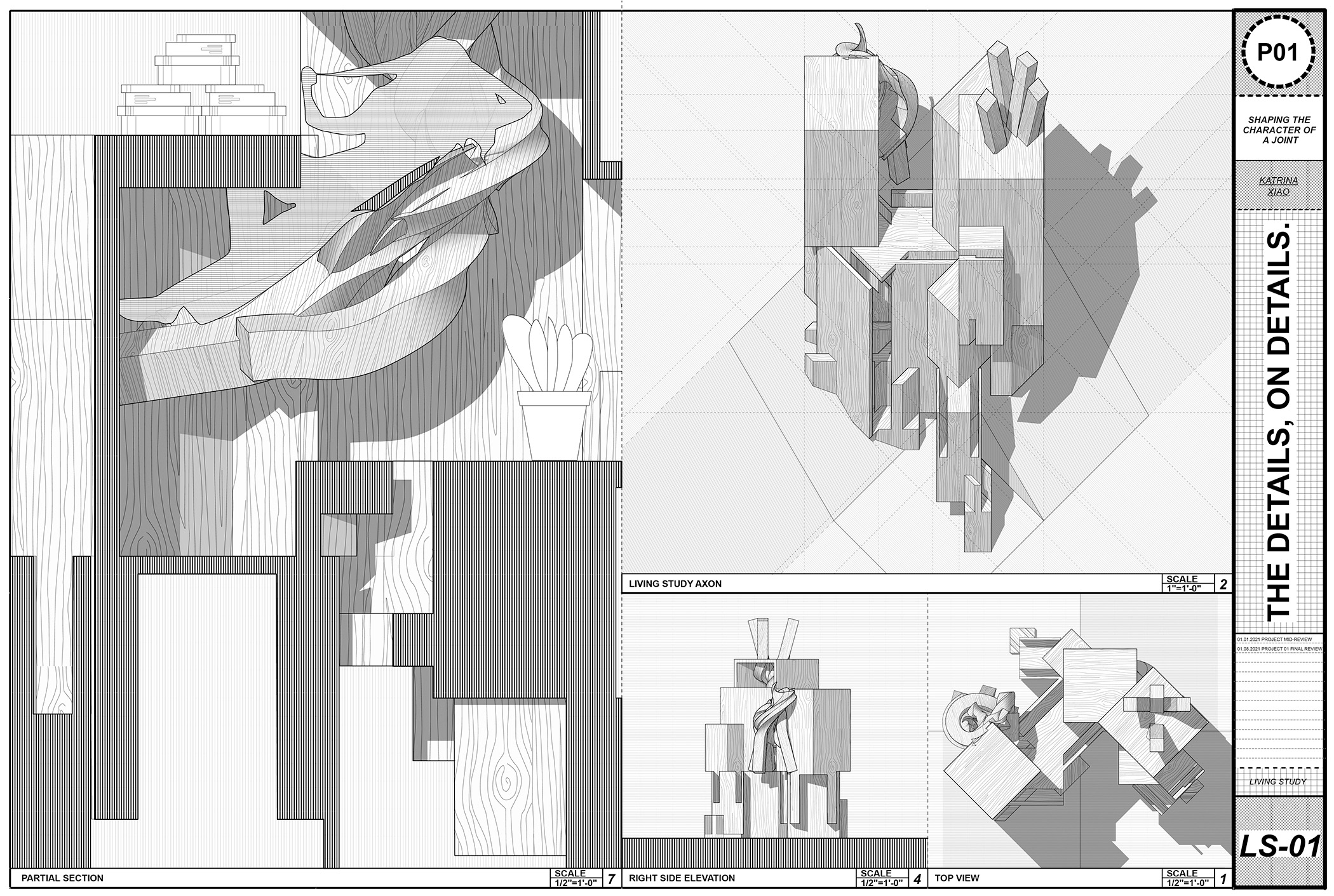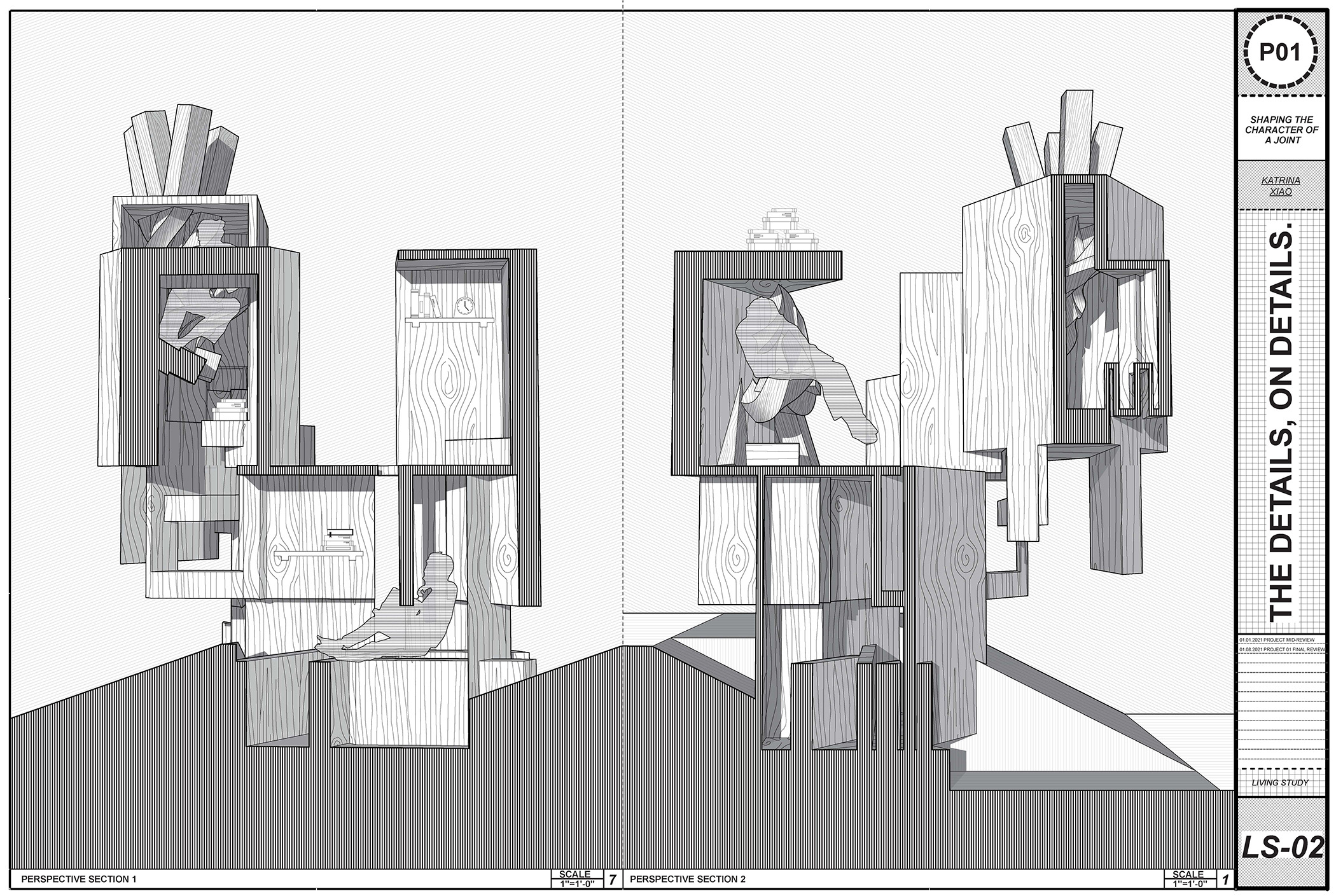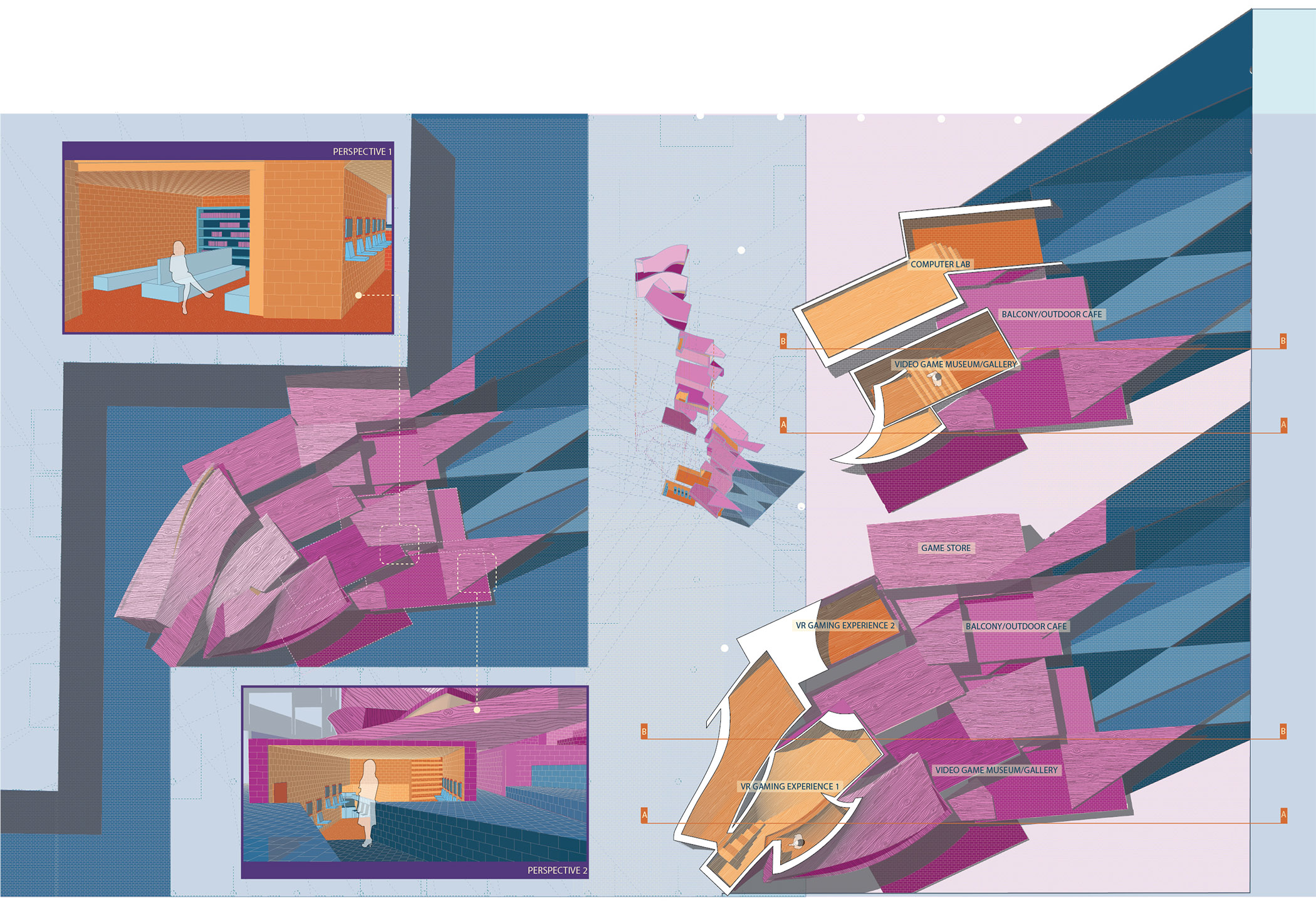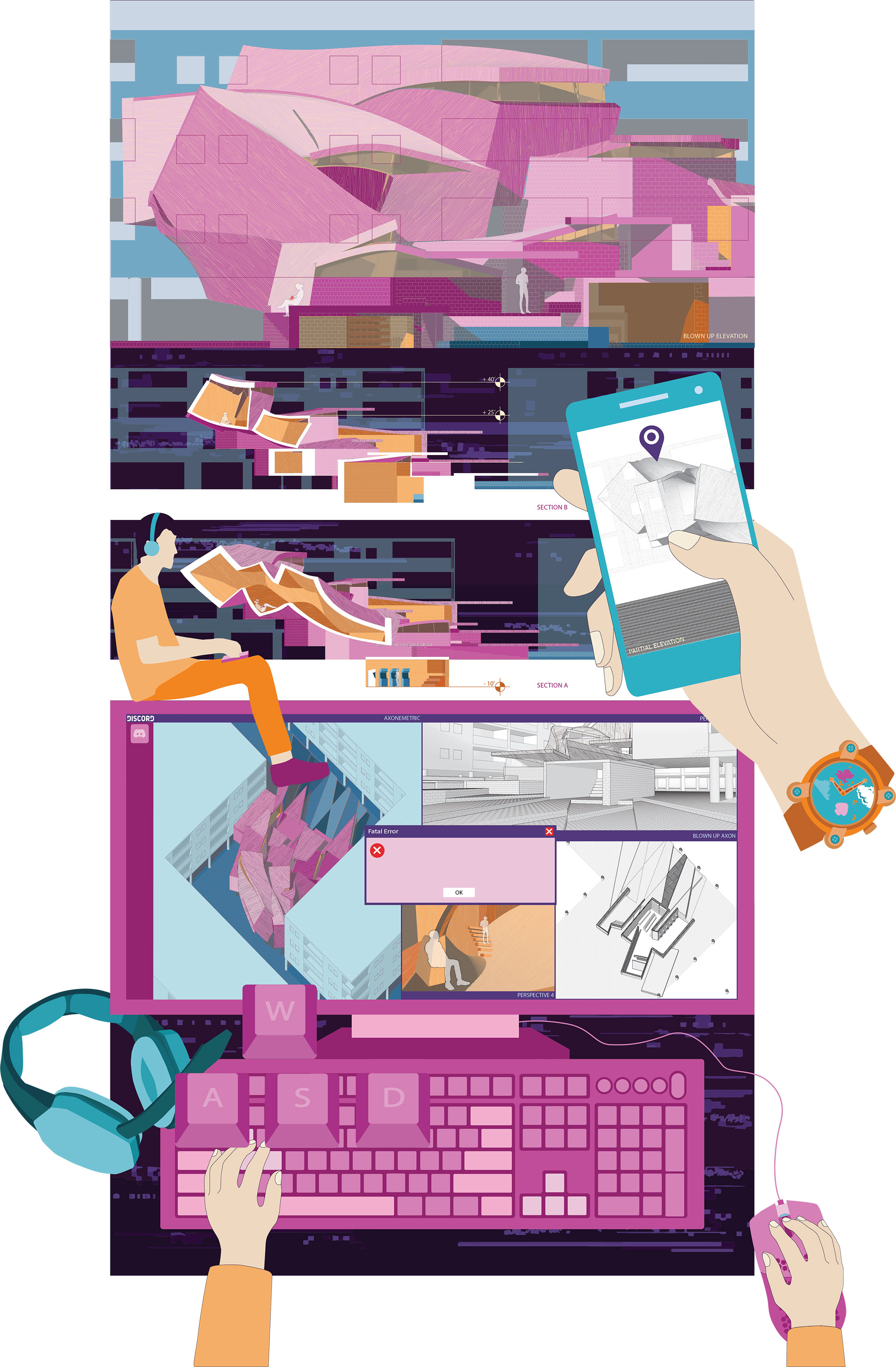The Virtual Twist
My project explores the word deceptive through the action of twisting. Personally, deceptive often relates to ideas of illusion and misleadingness. An object may appear to be something, but is actually another, and I wish to accomplish this through twisting the structure itself, the intersections, and the space. In my living study, deceptiveness was created in two ways. The structures would first appear as masses from the exterior; however, once you twist yourself around and move into the structure, the interior would be revealed. The other illusion is that from the entrance, shown in the right-side elevation, the image of a full joint is shown but its function is hidden. As you walk around and into the site, the full joint starts to deform and break into several parts that become usable pieces inside the structure.
My Final Project “The Virtual Twist” is a video gaming center that takes place in an apartment lot. Here, the concept of deceptiveness merges with virtual reality and immersive gaming.
On a Saturday afternoon, Dexter, an obsessive introverted gamer encounters a fatal error in his computer. Seeking for a place to access internet and game, he discovers this new video gaming center. When he enters from the north entrance, he first observes how the building material connects with the walking path. Walking by, he realizes the building is in fact twisting off a grid; as it twists more, the pieces interact and eventually merge together, forming a continuous large space. If Dexter entered from the south entrance, he would first spot a peek of the structure that appears to be floating, which also has matching patterns with the apartment building behind, creating deceptiveness.
The game store and the computer/research lab can be accessed straight from the outside. To get to the main gaming area, which is the VR area, one would have to first go down, and go through the video game gallery/museum and library.
The building form is also thought to mimic the evolution of video games: starting as more rigid, fixed and set, and now becoming more free, interactive and immersive.
